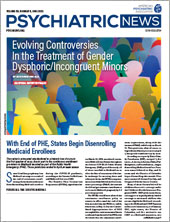A recent
New York Times report shed light on the growing issue of unaccompanied minors entering the United States only to find themselves in some of the harshest and most exploitative work environments across various industries. The article reveals a shadow workforce that violates child labor laws that have been in place for nearly a century. The exploitation of these children is a consequence of systemic failures and the lack of political and economic will to innovate solutions to this crisis.
Having a personal experience as an adolescent migrant helps me understand some of the harsh realities of exploitation. I worked at a frame shop for six months, devoting most of my time to the job from Monday to Saturday and frequently working long hours into the night. I did not have a working cellphone or computer, and neither the shop nor the place where I was residing had internet access. The majority of this half year was spent in silence, working alongside the shop’s owner, a reserved and silent individual.
I had initially envisioned enjoying my time in a beautiful coastal city with beaches known for its tourist attractions. But instead I found myself fixated on the countdown until my return home, symbolized by a handmade cardboard calendar with marked-off squares for each day remaining. At the time, I believed that this experience was acceptable. I thought it was just another adversity I had to overcome as part of growing up and helping my family. This mindset perpetuates social inequities and prevents children and adolescents from making informed decisions about the challenges they wish to undertake in their pursuit of safety and their personal goals.
Many migrants like me believe that overcoming adversity makes us stronger and that hardship and injustices have to be tolerated to accomplish our dreams. This idea follows us and infuses our experiences, even as we traverse developmental stages, borders, and personal milestones. Regardless of what I have accomplished during my residency training (two research grants, board and committee appointments, writing resource documents, and publishing articles), I am on a J-1 visa and have to return to Colombia after I finish my fellowship in child and adolescent psychiatry. There are waivers and other pathways to avoid this, but those are the same barriers that maintain inequities, anxiety, stress, and broken dreams.
The question for us is this: What can individual psychiatrists and the entire field of psychiatry do? Most of these children don’t have access to mental health services, and in many cases, they receive no health care at all. There are numerous barriers to accessing the mental health services that are often critical for migrant children, including caregiver availability, transportation, cost, awareness, and stigma. One first step is to generate community outreach and meet children and adolescents where they are: at school, work, and home. This calls for us to get out of our comfort zone, share our experiences, be vocal about injustices, and make sure that every migrant child is safe—safe from violence, mistreatment, injustice, isolation, loneliness, structural barriers, and a multitude of forces that impede their health, development, and well-being.
In late February 2023, the Biden administration announced a series of actions aimed at preventing the exploitation of the labor of migrant children released from U.S. custody, citing an increase in workplace violations in recent years. These actions include the creation of an interagency task force led by the U.S. Department of Labor (DOL) to crack down on illegal child labor. For this to be of meaningful benefit to these children, Congress will need to support these initiatives by allocating additional funding for DOL investigations and by increasing the penalties for violating child labor laws. Psychiatrists can offer their insights on behalf of these vulnerable children as these proposed policies make their way through the legislative process.
The use of child labor is inherently exploitative, and the terrible, life-altering consequences include workplace injuries, deteriorating school performance, and shattered dreams. These children often are unaware of their workplace rights and protections. Every psychiatrist can take steps to support them via advocacy and education of themselves and others, as well as by being proactive in clinical scenarios. Clinicians can cultivate clinical spaces that are trauma informed and culturally sensitive. For example, they can ensure there are resources in the child’s native language, be flexible with appointments, support the caregivers in navigating unfamiliar systems, and document social determinants to lend a fuller understanding to the youth’s symptoms and situation.
APA’s resource document on social determinants of mental health in children and youth and the immigration toolkit provide more information specific to the care of migrant youth. Working with these children and helping advocate for their rights, safety, and mental health is our ethical and professional obligation. ■

